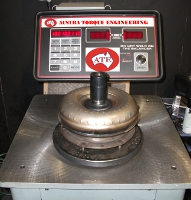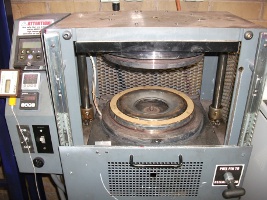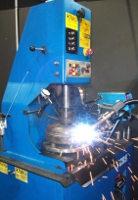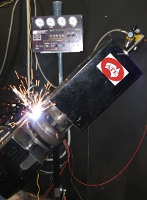Standard Torque Converter
It is crucial to the performance of your vehicle that the Torque Converter operates as it was initially intended. ATE Standard Remanufactured Torque Converters are built to meet and in most cases exceed OEM specifications.
We offer the highest level of customer service and after sales service. All repairs and modifications are carried out in house by our qualified and experienced personnel.
ATE has an extensive range of Torque Converters in stock ready to be delivered to you SAME DAY.
Common faults that develop in the Torque converter relate to failed bearings, stripped splines, burnt and worn out lock up clutches. At ATE Standard Remanufactured Torque Converters undergo the following processes;
- The Torque Converter is opened, disassembled and thoroughly cleaned
- All parts of the Torque Converter are inspected for wear or damage
- New improved updated parts like billet front covers, hardened splines, bearings replace old
- Bearing and lock up clutch surfaces are machined to restore parrellism and perpendicularity
- The Converter is re-assembled
- The Converter is welded on one of our three precision welding machines
- The Converter is pressure checked for leaks @ 150 PSI
- The Converter is balanced on our computerised balancing machine
- The Converter goes through final inspections then painted, ready to be delivered
Utilising The Latest in Technology

This computerised balancing machine allows us to balance a converter and all of its internal parts

This bonding machine allows us to bond new lock up clutches on the Converter piston

This welding machine clamps the two halves of the converter to be welded

This welding machine allows us to rotate the converter 360 degrees
Below you will find a simple explanation of the basic elements and workings of a Torque Converter.
A Torque Converter is a type of fluid coupling that transfers rotating power from the motor to the Automatic Transmission. The Torque Converter is found inbetween the motor’s driveplate and Automatic Transmision, and basically replaces the manual clutch.
A basic fluid coupling has two elements, the Impeller which is driven by the motor and the Turbine that drives the load. The Torque Converter has a big advantage over a fluid coupling in that it has a third element called a Stator. The Stator is located inbetween the Impeller and Turbine and has the ability to redirect the oil back into the Turbine and multiply the torque that the engine produces. Inside the Stator there is a one way clutch that allows the Stator to lock under acceleration thus multiplying torque, and free spin in the opposite direction when the Torque Converter reaches the coupling stage.
Unlike a fluid coupling which has straight vanes the Torque Converter utilises curved vanes in all three elements. The curved vanes in the Turbine and Impeller allow for better and smoother oil flow, and the curvature of the stator blades is what allows the oil to be redirected back into the Impeller. The shape and direction of the blades in the three elements are what governs the efficiency, torque multiplied and stall of the Torque Converter. All of the Manufacturers have come up with there own design and size of Converter to suit their specifications. As all vehicles come in different sizes and shapes, all Converters are matched the their specific application, and come in all shapes and sixes from as small as 6 inches to as large as 13 inches, in some industrial applications they can get as big as 30 inches.
Although the Torque Converter has become more efficient over time it still has a certain amount of slip in it. In Later models the Torque Converter utilises a fourth element called a lock up clutch, this allows the Turbine to mechanically lock onto the Impeller, thus eliminating all slip in the Torque Converter. The recent call from goverments to reduce emissions and increase fuel efficiency, more manufacturers are utilising electronic computer software in the Transmission that allows the Torque Converter clutch to be able te be either partially locked or fully locked, at anytime in any gear, with the addition of extra gears this has greatly reduced emission and increased fuel efficiency.
